Interview with Artists (2)
Listening to artists introducing their own favorite things and attitude of life brings us so closer to the artists!
In this interview we will introduce to you nine artists: (1) British Sara Sammakia, (2) Taiwan Liu Han-Wen, (3) Taiwan Hsu Wen-Te (4) Taiwan Chang Kuo-Erh, (5) India Shveta Saxena, (6) Norway Trygve Amundsen, (7) China Hsu Zizhi, (8) China Cui Xiunan, (9) China Tu Jianguo
~ Hoping to bring joy and vitality to everyone ~

In my works, many cartoon characters are used, hoping to bring joy and vitality to everyone. The cartoon characters in my paintings, some sad, some joyful, all express my feelings. Influenced by modern society, Chanel or other designer brand symbols can be seen in the works.

~ I like to use animals as a metaphor for life ~

I prefer to use animals as a metaphor for life.
Like the one above, the snow leopard was painted in the snow. Although it was severely tested by the climate, it was very tough, so the painting was named “Pride.” I think just like in life, no matter how unsatisfactory it is, we still have to live with dignity.

~ We hope to use reed as a theme and show uniqueness. ~
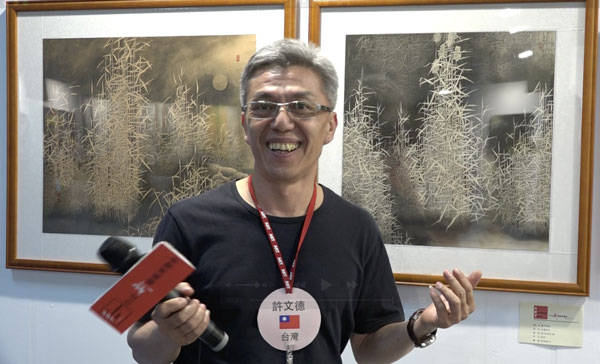
I used the script, the paper, and the colored propaganda to create this painting. The theme of the painting is “Reed.” After the double outlining, the materials behind are slowly layered, two layers, three layers, four layers, up to ten layers. Stack slowly to accumulate the layers behind.
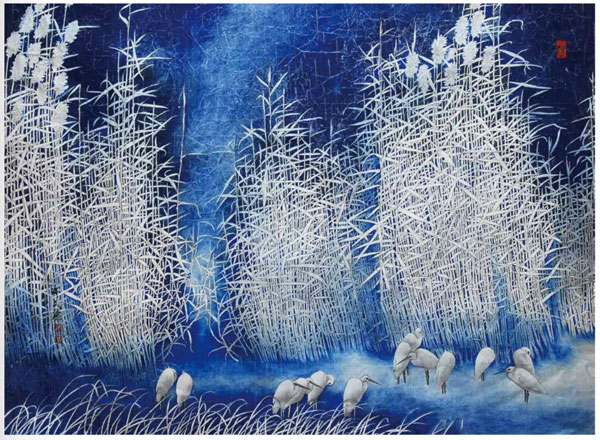
Few people create reeds. I myself don’t see other people create. I hope to use reed as a theme, which can show uniqueness and allow my own work to be highly recognizable.
~ I like to find themes and inspirations from everyday life ~
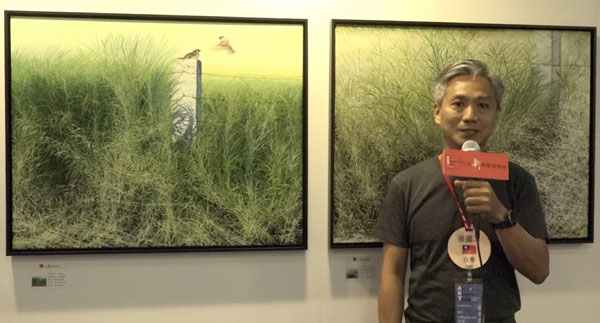
I am an artist of Taiwan selected to participate in the “Artlight Exhibition.” My name is Chang Kuo-Erh. I like to find themes and inspirations from everyday life.
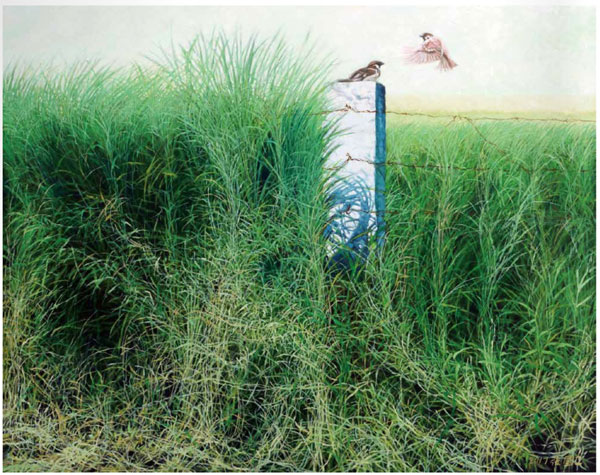
Most of the recent paintings were of a series depicting grassland. This grassland is in Taichung City, weeds grew on the abandoned area. I rearranged the composition of weeds and space, and then recreated the composition into a series painting. This is my concept of creation and ideas.
~ When a lot of elements mix and meet, it will form a unique sense of beauty ~
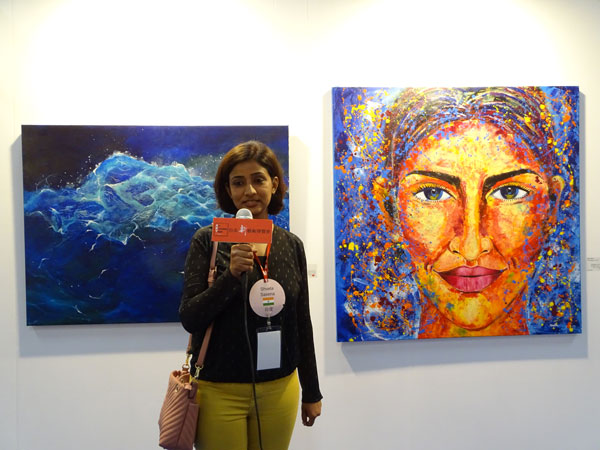
Two of my works are exhibited here. One of them is called “Beautiful Chaos.” Whenever many elements mix and meet, they will produce a chaotic, disorderly state and a unique sense of beauty. In the works, I use water and natural elements to express this blending and disorderly beauty.

Another painting is a portrait called “The enigmatic smile.” Everyone knows that even the simplest expression will have many different interpretations. For example, if you are in a good mood, when you are looking at the painting, you will feel that the smile is very happy; if you are sad now, you may think that this person’s smile is sorrowful. The viewer’s mood will definitely affect the expression of the protagonist in the painting. Therefore, this painting is called “The enigmatic smile” and you can see a lot of expressions and feelings.
~ Painting is like having fun, just to have fun ~

I usually use oil painting to create, but this time most of the works are composite media. I myself have been painting for 35 years because I like to travel everywhere and have a lot of experience with things in the surrounding.
For me, painting is like having fun, just to enjoy fun, to experience more fun experiences, and to create better works.

~ Through deformation and the use of color, the painting looks dazzling with the Chinese cultural sentiments ~

Hello everyone, I’m Xu Zizhi from Xiamen. This time I brought the entire series of works mainly reflecting the image of a lady. Through deformation and the use of color, the painting creates a contemporary atmosphere. The entire work is more dazzling, but it does no lack the feelings and sentiments of Chinese culture.

~ Using realistic techniques to draw a sense of time and vicissitudes ~

For this exhibition, I prepared ten pieces of work: five landscapes and five figures. Landscape works use realistic techniques to draw a sense of time and a sense of vicissitudes, objectively depicting the traces of history. The figure paintings use realistic methods to depict the simplicity of the local residents.


~ Because I live in a water village, I have different feelings about the water town. ~

The works I brought this year are the series of water townships, different from my previous years’ creations. Last year I brought the Dream Landscape series. Because I live in a water village, I have different feelings for the water towns, and I have also made an attempt in the prevailing impressionistic style, and enjoyed the process and loved the subject in this area. I have absorbed the essence and characteristics of some old artists, such as Wu Guanzhong, blending the concrete and abstract feelings, to create this series of works and I think it is worth remembering!


